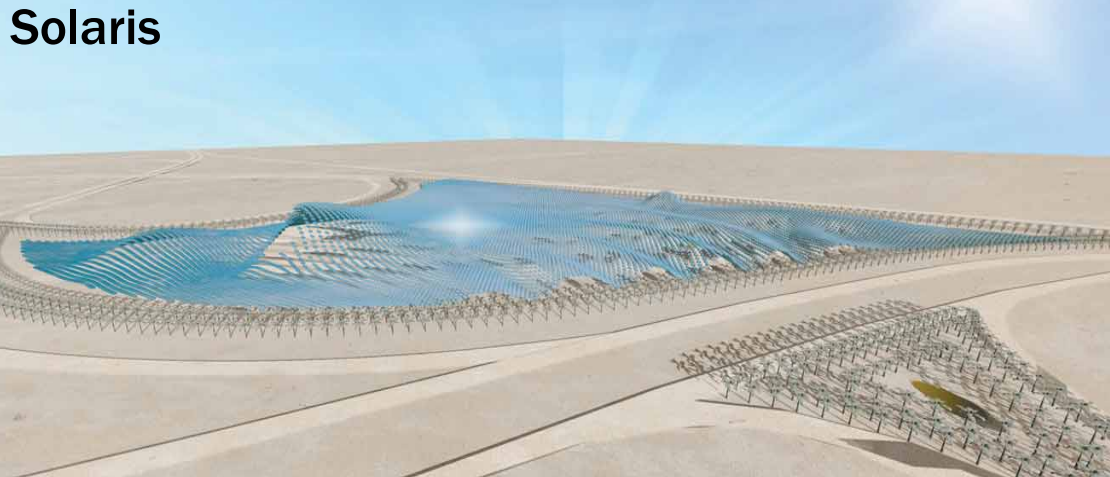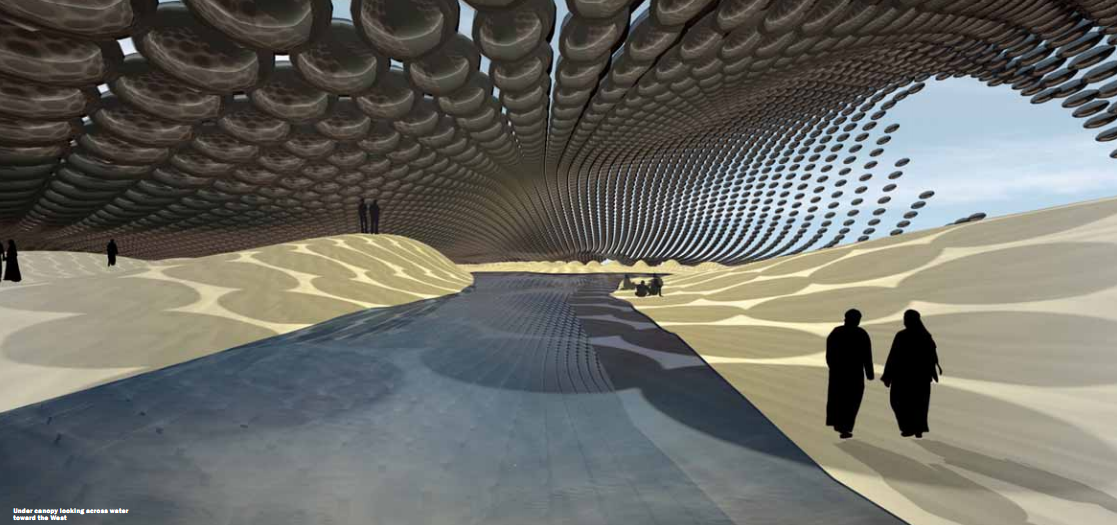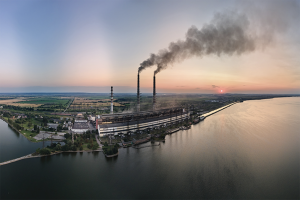Drawing on the inspiration of the Bedouin tent of the Arabian Peninsula, architectural firm
Predock Frane has designed Solaris, a solar canopy that drapes a massive area and acts both as a landscape and structure.

Click to Enlarge
The structure is entered through a tunnel passage. To make energy generation possible, intelligent solar "balloons" mounted on a light sensitive tissue form a veil that tracks the sun, adjusting to capture solar energy.

Click to Enlarge
The ballons use high-concentration solar modules from the company
Cool Earth. Thanks to its 25,000 solar cells, the canopy can produce an annual average of 73,000 megawatt hours.

Click to Enlarge
This creation was a prize winner in the Land Art Generator competition, as was the design featured in the post
Wind Energy Without Propellers.
 Click to Enlarge
The structure is entered through a tunnel passage. To make energy generation possible, intelligent solar "balloons" mounted on a light sensitive tissue form a veil that tracks the sun, adjusting to capture solar energy.
Click to Enlarge
The structure is entered through a tunnel passage. To make energy generation possible, intelligent solar "balloons" mounted on a light sensitive tissue form a veil that tracks the sun, adjusting to capture solar energy.
 Click to Enlarge
The ballons use high-concentration solar modules from the company Cool Earth. Thanks to its 25,000 solar cells, the canopy can produce an annual average of 73,000 megawatt hours.
Click to Enlarge
The ballons use high-concentration solar modules from the company Cool Earth. Thanks to its 25,000 solar cells, the canopy can produce an annual average of 73,000 megawatt hours.
 Click to Enlarge
This creation was a prize winner in the Land Art Generator competition, as was the design featured in the post Wind Energy Without Propellers.
Click to Enlarge
This creation was a prize winner in the Land Art Generator competition, as was the design featured in the post Wind Energy Without Propellers.





